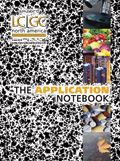Simultaneous UHPLC–MS Analyses of Explosive Compounds
Explosive compounds are widely used in warfare, mining industries, terrorist attacks, and civil constructions. Explosive contaminated soils are mostly found on firing points, impact areas, and training ranges. The explosive contaminates in soil are possible sources for surface and ground water contaminations, posing environmental and public health risks due to the compounds' toxicity, carcinogenicity, and mutagenicity.
Explosive compounds are widely used in warfare, mining industries, terrorist attacks, and civil constructions. Explosive contaminated soils are mostly found on firing points, impact areas, and training ranges. The explosive contaminates in soil are possible sources for surface and ground water contaminations, posing environmental and public health risks due to the compounds' toxicity, carcinogenicity, and mutagenicity.
Instrumentation
An ultra high performance liquid chromatography-mass spectrometry (UHPLC–MS) method was developed to efficiently separate, detect, and quantitate all four classes of explosive compounds, including eight nitroaromatics, two nitroamines, five nitrate esters and two peroxides. The explosives were separated on a Hypersil GOLD PFP 1.9 μm, 2.1 × 100 mm column and detected by selected ion monitoring (SIM) on an MSQ Plus Mass Detector — a fast scanning, single-quadrupole mass spectrometer.
Results
The simultaneous separation and detection of 17 explosive compounds was achieved through UHPLC–MS, using the Thermo Scientific Accela system with a fast scanning, single quadrupole mass spectrometer (Figure 1). The sensitivities were achieved at ppb level for TNB, 1,3-DNB, TNT, 2,6-DNT, 2,4-DNT, TATP, and TETRYL. This represents a 35 times improvement in the detection sensitivity for TATP relative to the detection sensitivity of the Agilent instrument and method. The detection sensitivities obtained by the UHPLC–MS method with library matching of APCI mass spectra was more than 10-fold versus the EPA 8330 method.

Figure 1
Conclusions
The simultaneous analyses of nitroamines, nitroaromatics, nitrate esters, and peroxide explosives by UHPLC-MS were accomplished utilizing sub-2-μm particles, improved the separation efficiencies and resolutions. The MS detection method offered improved sensitivities, good selectivity, and additional MS confirmations. The detection sensitivities were further increased by the preconcentration step implemented in the sample preparation process. The more confirmative identifications of explosives were achieved by comparing all of the collected APCI mass spectra to the comprehensive MS spectra library of the explosive residues. Improved separation performance, increased detection sensitivity, and better selectivity were demonstrated, compared to the current USEPA 8330 method with 35 times detection sensitivity for TATP compared to the alternative instruments and methods (1).
Reference
(1) Agilent Application: Analysis of Trace Residues of Explosive Materials by Time-of-Flight LC–MS.

Thermo Fisher Scientific, Inc.
2215 Grand Avenue Parkway, Austin, TX 78728
tel. (800)532-4752; fax (561)688-8731
Website: www.thermoscientific.com

Free Poster: NDSRI Risk Assessment and Trace-Level Analysis of N-Nitrosamines
April 25th 2025With increasing concern over genotoxic nitrosamine contaminants, regulatory bodies like the FDA and EMA have introduced strict guidelines following several high-profile drug recalls. This poster showcases a case study where LGC and Waters developed a UPLC/MS/MS method for quantifying trace levels of N-nitroso-sertraline in sertraline using Waters mass spectrometry and LGC reference standards.
New TRC Facility Accelerates Innovation and Delivery
April 25th 2025We’ve expanded our capabilities with a state-of-the-art, 200,000 sq ft TRC facility in Toronto, completed in 2024 and staffed by over 100 PhD- and MSc-level scientists. This investment enables the development of more innovative compounds, a broader catalogue and custom offering, and streamlined operations for faster delivery. • Our extensive range of over 100,000 high-quality research chemicals—including APIs, metabolites, and impurities in both native and stable isotope-labelled forms—provides essential tools for uncovering molecular disease mechanisms and exploring new opportunities for therapeutic intervention.
New Guide: Characterising Impurity Standards – What Defines “Good Enough?”
April 25th 2025Impurity reference standards (IRSs) are essential for accurately identifying and quantifying impurities in pharmaceutical development and manufacturing. Yet, with limited regulatory guidance on how much characterisation is truly required for different applications, selecting the right standard can be challenging. To help, LGC has developed a new interactive multimedia guide, packed with expert insights to support your decision-making and give you greater confidence when choosing the right IRS for your specific needs.
Using the Carcinogenic Potency Categorisation Approach (CPCA) to Classify N-nitrosamine Impurities
April 25th 2025Learn how to manage nitrosamine impurities in pharmaceuticals with our free infographic. Discover how the CPCA approach establishes acceptable intake limits and guides the selection of NDSRI reference samples. Stay compliant and ensure safety with our ISO-accredited standards.

.png&w=3840&q=75)

.png&w=3840&q=75)



.png&w=3840&q=75)



.png&w=3840&q=75)













